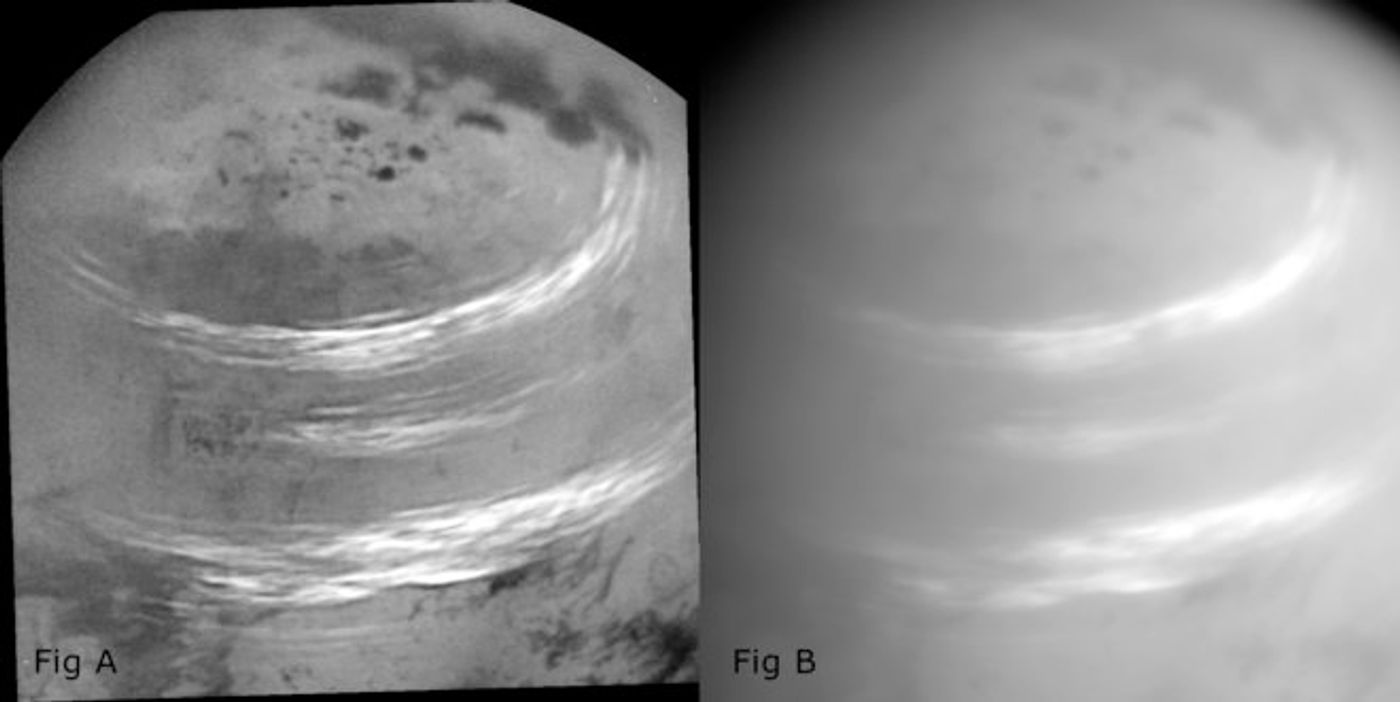Cassini Grabs Photos of Methane Clouds in Titan's Atmosphere
As a part of the Cassini probe’s Grand Finale, it’s tasked with whizzing in between Saturn and its rings and satellites 22 times before its suicide mission in September when it dives into Saturn’s atmosphere in a final farewell.
NASA has been using Cassini during these 22 close-proximity flybys to learn more about everything from the age of Saturn’s rings, to their mass, to more about Saturn’s atmosphere. On the other hand, Cassini also gets a closer look at some of Saturn’s natural satellites, including the largest of them all, Titan.
During one of these flybys, Cassini was able to grab incredibly detailed shots of Titan’s atmosphere revealing its Summertime methane clouds. The photograph was reportedly snapped on Sunday, May 7th when Cassini was just over 300,000 miles away from the moon.
Image Credit: NASA/JPL-Caltech/Space Science Institute
This isn't the first time methane clouds have been spotted on Titan, but because of the close proximity of the Cassini spacecraft at the time, they are some of the most detailed images yet.
Along with Enceladus, Titan is one of the moons of major interest because it may have the environment required to support life. Like Earth, it’s believed that Titan harbors liquid oceans on its surface, and would be the only other known body in our Solar System besides Earth to do so.
Related: Cassini grabs photographs of waves in Saturn's rings, caused by gravitational forces from moons
Enceladus, on the other hand, is believed to have a sub-surface ocean, which means there’s a thick shell encasing the possible life-supporting ocean.
Nevertheless, both moons are of interest to NASA and other space agencies, and this is the main reason NASA will be destroying Cassini in September, as it prevents the spacecraft from accidentally colliding with and contaminating either moon.
One thing that’s for sure is NASA is exploring this region in our Solar System isn't over. NASA is planning two new missions to study these moons in more detail.
It may be a while before we get new probes out there again, but once there, NASA plans to test their habitability with orbiters and landers just like we have done with Mars. Eventually, me may even drill into Enceladus’ surface to see if that subsurface ocean really exists.
Source: Space.com, Popular Science









